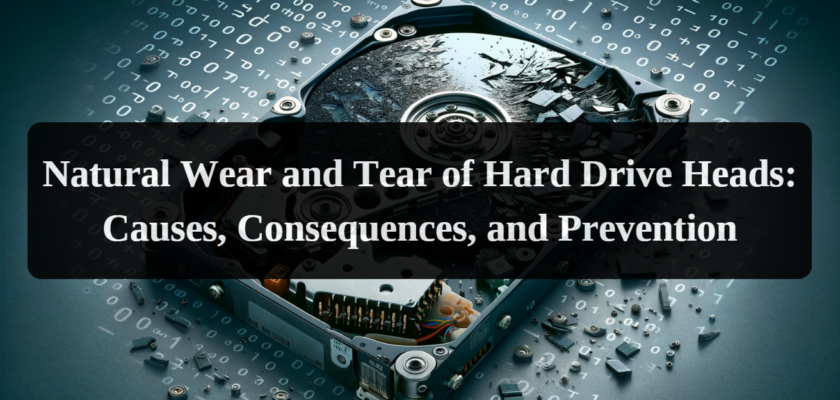Technical Aspects of Hard Drive Head Operation
Hard drive heads are mechanical devices that move over magnetic disks to read and write data. Their operation includes the following elements:
- Actuator: Installed on the heads, it is responsible for their movement. Controlled by a motor and controller for precise positioning of the data on the disk.
- Magnetic Disks: Inside the HDD, there are magnetic disks where data is stored in magnetic form.
- Reading and Writing Data: The heads are equipped with magnetic sensors that “read” and “write” data on the magnetic disks.
Magnetic coatings on the disks play a crucial role in data storage, and precise movement of the hard drive heads is necessary for their integrity. Wear and tear of the heads can occur due to constant mechanical contact with the disks and thermal factors. Understanding these technical aspects helps users realize the importance of caring for their HDDs and regular maintenance for long-term reliability and data integrity.
Causes of Natural Wear and Tear of Hard Drive Heads
- Physical Wear and Tear: Hard drive heads move over the surface of magnetic disks to read and write data. This movement often involves contact between the head and the disk, which can lead to physical wear and tear. This process can be exacerbated by impacts or vibrations that can damage the heads or the disk.
- Wear of Magnetic Coatings: The magnetic disks in the hard drive have thin magnetic coatings where data is stored. The constant interaction of the heads with these coatings can lead to wear, reducing the performance and reliability of the hard drive.
- Thermal Factors: Overheating of the hard drive can accelerate the wear of its heads. Elevated temperatures can cause deformation or degradation of materials, negatively impacting the heads’ performance.
- External Factors: Shocks, drops, and vibrations can damage the hard drive heads. Even minor damage can lead to system failures.
Consequences of Natural Wear and Tear of Hard Drive Heads
Natural wear and tear of hard drive heads can have serious consequences for data storage and computer functionality. Some of the most common consequences include:
- Data Loss: Worn-out heads can lead to read and write errors, resulting in data loss. This is especially dangerous when storing important business or personal data.
- System Failures: Worn-out heads can cause system crashes and software failures. This can lead to unpredictable crashes and computer reboots.
- Slow Performance: As worn-out heads operate less efficiently, the speed of reading and writing data decreases, resulting in slower computer performance.
- Increased Risk of HDD Failure: Worn-out heads can increase the risk of hard drive failure as a whole. This can lead to the complete loss of data and the need for HDD replacement.
Preventing Natural Wear and Tear of Hard Drive Heads
Preventing natural wear and tear of hard drive heads is crucial to ensure data reliability and long-term HDD functionality. Here are some ways to reduce the risk of wear and tear:
- Data Backup: Regularly back up data to external drives or cloud storage to minimize data loss in case of failures.
- Maintaining Optimal Temperature: Ensure your computer is kept in a cool, well-ventilated environment to prevent hard drive overheating.
- Avoiding Shocks and Vibrations: Handle your computer with care and protect it from physical impacts, shocks, and vibrations that can harm the hard drive heads.
- Regular Maintenance: Conduct regular computer maintenance, including checking the condition of the hard drive and its heads. Replace worn components when necessary.
- Use Antivirus Software: Employ antivirus software to protect your system from malware that can cause unwanted disk activity and increase wear and tear.
The frequency and intensity of hard drive usage significantly affect the wear and tear of its heads. Constant activity, such as booting the operating system, installing and uninstalling programs, and frequent file copying, can accelerate headwear. Therefore, users should be attentive to the intensity of their hard drive usage and take precautions to reduce wear and extend its lifespan.
Conclusion
Natural wear and tear of hard drive heads are inevitable processes that can have serious consequences for data storage and computer functionality. However, with the right precautions and regular maintenance, the risk of wear and tear can be minimized, and the lifespan of the hard drive can be extended. Protect your data and make an effort to maintain the reliability of your hard drive for uninterrupted computer system operation.

